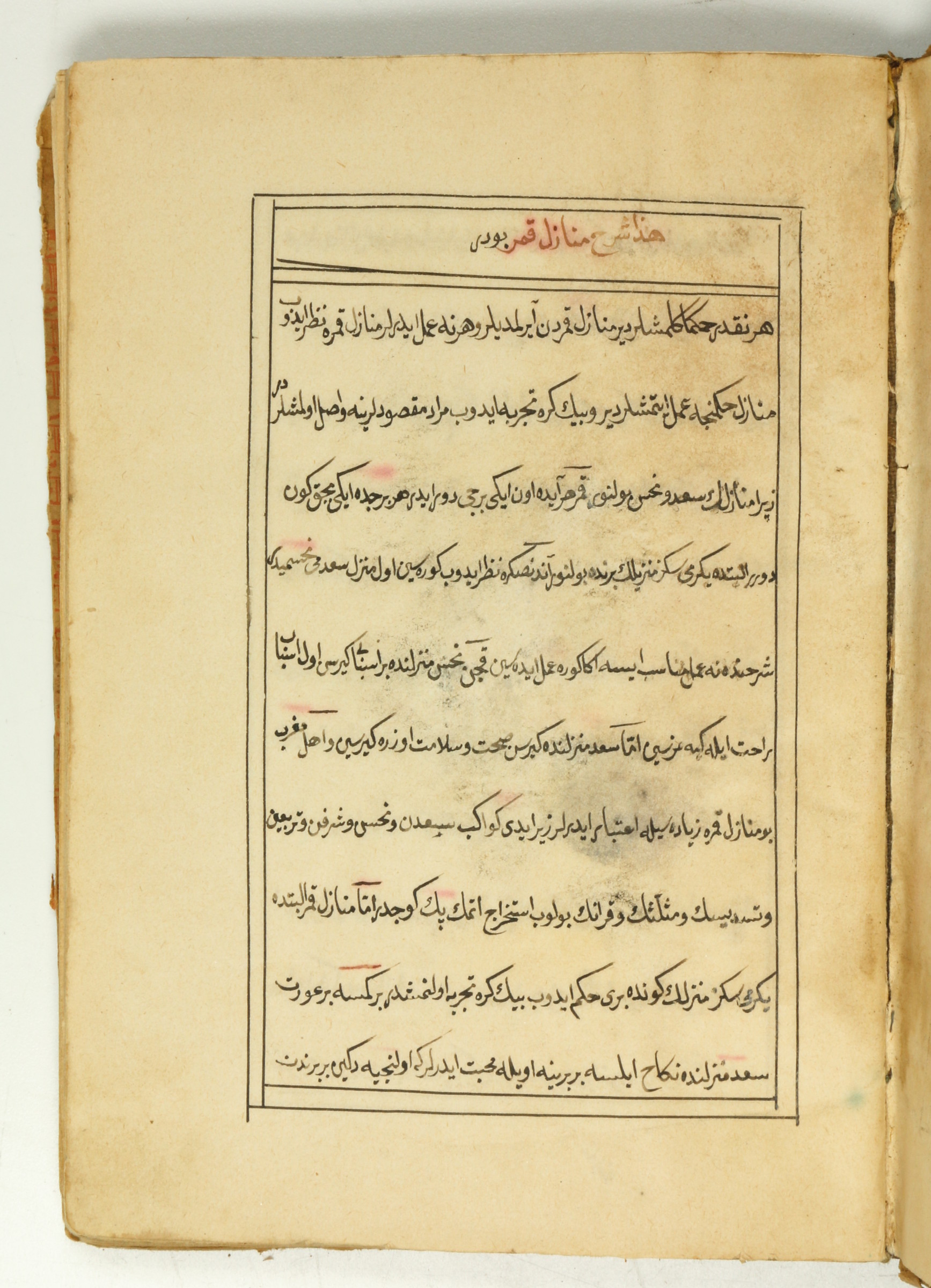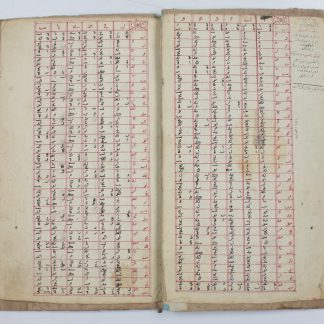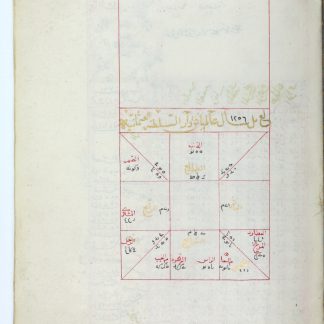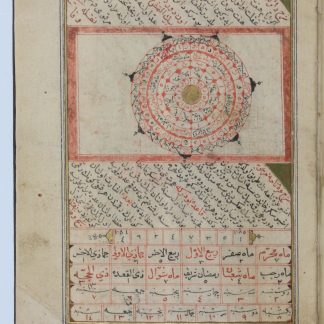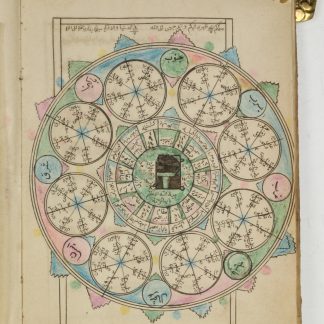On Astronomy and Signs
[Book on Astronomy and Signs].
No place, probably later 19th century.
8vo (120 x 170 mm). (52) pp., 2 blank ff., (5), 48, (2), (2 blank), (80) pp. Black and red ink on polished paper. With numerous full-page colour diagrams (both in coloured ink and coloured pencil), one including a sketch of the Kaaba in Mekkah, and an inserted volvelle on cardboard. Bound in boards (ca. 1900) covered with waste paper printed in Arabic and Armenian.
€ 3.500,00
A manuscript on astronomy and its symbolism in Ottoman Turkish.
Various signs of damp- and waterstaining; a few leaves stuck together, damaged or illegible. Binding noticeably stained; spine chipped and frayed.


